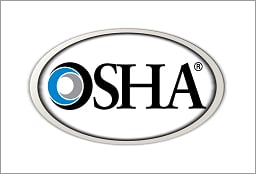Guidance for your business practices while navigating COVID-19.
We never required masks before, what are the considerations from regulations (i.e., federal, state, local) to best practices?
Evaluate your business’ level of risk for exposure to COVID-19 according to OSHA. Think about the sequence of individual job duties, this will vary depending on the tasks that interact with others.
If within 6 feet of contact with others cannot be controlled through physical barrier guards, then some type of PPE that covers the mouth and nose is needed. Also, if within 6 feet (close contact), then gloves and glasses should be part of the PPE approach to further protect against the spread of COVID-19.
Face Covers and Examination Masks
- Loose fitting (snug, but comfortable).
- They decrease spray of air molecules carrying the COVID-19 virus found in saliva that occurs while talking, coughing or sneezing. Face covers and Examination or Surgical Masks are easily used in the marketplace, have multiple use, and accepted as good practice that is not regulated by OSHA. Face Covers can be hand washed. Examination Masks are disposable and offer more protection. Examination masks are more available for purchase every week.
N95 or Filtering Face Piece (FFP) Respirators
- Tight fitting and offer a higher protection against inhalation of air molecules carrying the COVID-19 Virus.
- At this time, the supply of FFP Respirators are in short supply and should be reserved for first responders and healthcare workers. This option (if you require your employees to wear FFP respirators) is regulated by OSHA and requires a written program, medical evaluation and annual fit testing. At this time FFP can be sanitized up to 3 times using an approved process.
All nose/mouth PPE requires storage in a clean paper bag when not in use. Inspection of the PPE should be done prior to each use by the employee.
Resources:
- Information for development of your business practices/educate employees CDC Face Covers CDC Examination Masks and N95 Respirators
- Contact R&R Insurance Services if you
- Would like to discuss alternate strategies
- Need clarification on using the right PPE
- Looking for a PPE Assessment
- Have additional questions about your business situation and COVID-19




 Deadline approaching: employers have until July 1, 2018 to submit their OSHA 300 log data electronically directly to OSHA.
Deadline approaching: employers have until July 1, 2018 to submit their OSHA 300 log data electronically directly to OSHA. Safety and Health Administration announced a delay in enforcement of the
Safety and Health Administration announced a delay in enforcement of the  Updated June 29, 2017: OSHA Delays Electronic Recordkeeping Deadline to December 1, 2017
Updated June 29, 2017: OSHA Delays Electronic Recordkeeping Deadline to December 1, 2017
